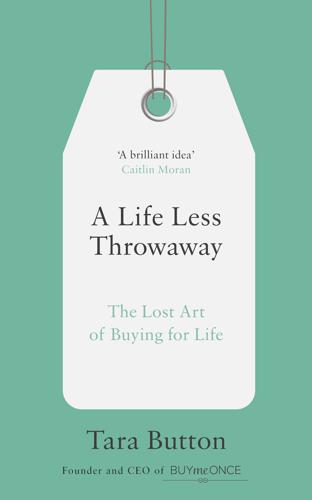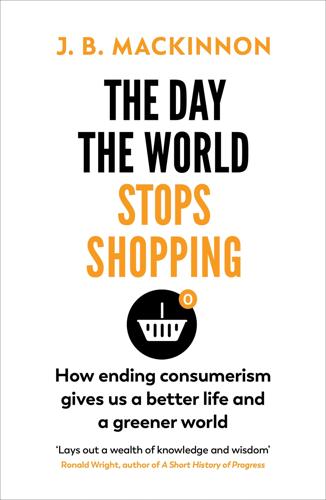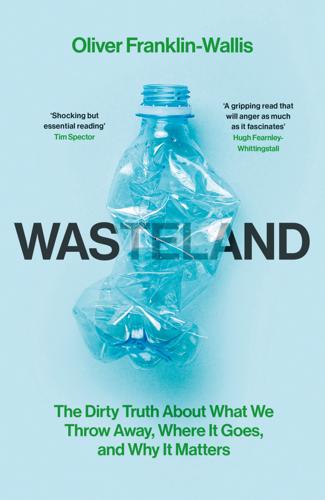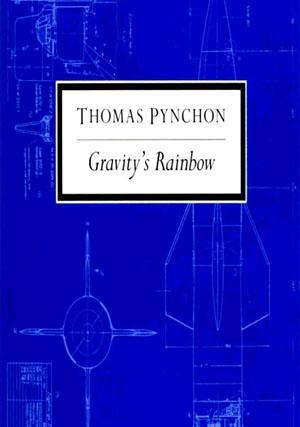
A Life Less Throwaway: The Lost Art of Buying for Life
by
Tara Button
Published 8 Feb 2018
Then representatives of the biggest electric companies in the world, including Osram, Philips and General Electric, met in Geneva on the night before Christmas to hatch a very unChristmassy plan. By the end of the meeting in a cramped back room, they had formed a secret group known as the Phoebus Cartel, and had all agreed to send their bulbs to Switzerland regularly to be tested to ensure they broke within 1,000 hours. They had even agreed to be fined for every hour they went over the limit. What they were doing was on very dodgy legal ground and we know that not everyone was completely happy about it. Some engineers attempted to get around the 1,000-hour limit by designing bulbs of a higher voltage, but they were soon found out and scolded by the head of Philips: ‘[This bulb design] is a very dangerous practice and is having a most detrimental influence on the total turnover of the Phoebus Parties … After the very strenuous efforts we made to emerge from a period of long-life lamps, it is of the greatest importance that we do not sink back into the same mire by supplying lamps that will have a very prolonged life.’4 They did not sink back into the ‘mire’.
…
The cartel was disbanded during the Second World War, when it became a little awkward for German, British and American businessmen to get together. But the damage had been done; the life expectancy of bulbs didn’t recover. I recently had the pleasure of talking to several people who work in the lightbulb industry today. When I shared the story of the 1924 Phoebus Cartel, they said that in many ways things were no better now. One engineer told me that one of the most underhanded tactics she’d witnessed recently was bulbs being sold with an advertised life of seven years but purposefully designed so they would only last two or three years, just long enough to avoid customer complaints and returns.

The Day the World Stops Shopping
by
J. B. MacKinnon
Published 14 May 2021
More than three decades later, in 1960, muckraking journalist Vance Packard popularized the term “planned obsolescence” to describe manufacturers’ deliberate efforts to design products so that they are quickly used up, stop working, fall apart, cannot be fixed, or otherwise become stale-dated. The Phoebus cartel’s decision to shorten bulb lifespans is considered one of the earliest examples of planned obsolescence at an industrial scale. Phoebus is easily cast as a conspiracy of big-business evil-doers. It even makes an appearance as such in Thomas Pynchon’s novel Gravity’s Rainbow, in which the shadowy organization sends an agent in asbestos-lined gloves and seven-inch heels to seize die-hard bulbs that burn beyond their thousandth hour of service.
…
The two towers of the International Youth Cultural Centre in Nanjing, China, are a standout example: 700,000 LED lights cover the sixty-storey buildings’ exteriors, which are also floodlit from the ground. The “Mighty Lights” on the Hernando de Soto Bridge in Memphis, Tennessee, involve 10,000 colour-controllable lights that cover the entire bridge structure. Meanwhile, on the famous Bahnhofstrasse, an upscale shopping street in Zurich, Switzerland, video screens increased by more than forty times in the past five years alone. A similar explosion in decorative lighting is taking place in private yards and homes. “If we improve the energy efficiency of all the outdoor lighting by switching to LED lights, but increase the total amount of advertising and floodlighting, then we might not actually save much energy on a global scale or national scale,” said Kyba.
…
The journey from good, long-lasting lightbulbs like the one hanging in the Livermore fire station to the disposable bulbs we know today began in 1924. That year, representatives from the world’s largest lighting companies—including such familiar names as Philips, Osram, and General Electric—met in Switzerland to form Phoebus, arguably the first corporate cartel with global reach. At the time, inventors were steadily increasing bulb lifespans, which was creating what one senior member of Phoebus described as a “mire” in sales turnover. Once everyone had filled their home with long-lasting bulbs, hardly anyone needed to buy new ones.

Wasteland: The Dirty Truth About What We Throw Away, Where It Goes, and Why It Matters
by
Oliver Franklin-Wallis
Published 21 Jun 2023
Finally there is ‘obsolescence of quality’, when products are designed to wear out faster or within specified time limits. Perhaps the most infamous example of the latter is the so-called ‘light bulb cartel’, when in 1925 representatives from the world’s largest light bulb manufacturers – including General Electric, Osram, and Philips – met in Geneva to discuss the problem of slumping sales. Up to that point, light bulbs had been so long-lasting as to rarely need replacing (one carbon filament bulb that hangs inside the fire department in Livermore, California, has been burning almost non-stop since 1901).21 So in Switzerland, the light bulb companies agreed to collectively reduce the designed lifespan of light bulbs from around 2,500 hours to just 1,000 hours.
…
By the time Packard was writing The Waste Makers, creating products with ever-shorter lifespans was a widely accepted way of creating consumer demand. As Harley Earl, then head of design at General Motors, put it in 1955, ‘[I]n 1934 the average car ownership span was 5 years: now it is 2 years. When it is one year, we will have a perfect score.’23 Today, overtly planned obsolescence of the kind practised by the light bulb cartel would be seen as unethical, not to mention illegal. But the fundamental tenets of obsolescence that Packard railed against are ingrained in the practices of modern industrial design. We now recognise that ‘obsolescence of desirability’ is simply another way of describing fashion, and is created not only by the advertising industry that Packard so despised, but through collective culture.
…
See Waste Electrical and Electronic Equipment (WEEE) Electronics Recyclers International, Inc (ERI) 247–54 Elizabeth I, Queen 148 Ellen MacArthur Foundation 117, 135 Ellington sanitary landfill 28–41, 55, 62, 94 Empson, William 335 endocrine-disrupting chemicals (EDCs) 69, 241–3 energy-from-waste (EfW) plants 24, 25, 39, 93–110 Environment Agency 37, 82, 333 Environmental Protection Agency (EPA), US 33, 54, 71, 226, 228, 241, 242, 243, 280–1, 282, 284–5, 287, 291, 293; Superfund National Priorities list 280–1 Environmental Working Group (EWG) 216 Eunomia 71 European Environmental Bureau (EEB) 229 European Food Safety Authority (EFSA) 228 European Space Agency (ESA) 3, 33 European Union (EU) 66, 79, 87, 89, 97, 107, 109, 187–8, 209, 214, 260; REACH 229 Eurystheus 226 Everest, Mount 3, 17, 24–5, 240 Evrnu 135 Exporting Harm 261–2 exporting waste 6, 74–92; Basel Convention and 90–1; China and 10–11, 75–92, 261–2, 270–1, 319; clothing 112–41; crime and 81–4; decline of 90–1; ‘dumping’ term and 85–6; Fukutomi Recycling 87–92; history of 75–6, 88–91; Operation National Sword bans 11, 78–9, 84–6, 87, 88, 90, 330; recycling industry and 76–80, 84–92; shipping/journey of 86–92; South East Asia 79–81, 84–5, 90, 91; toxic colonialism 6, 85–6 Extended Producer Responsibility (EPR) 131, 137, 330–1 Fabbri, Paolo 314 faeces: cesspits 27, 146–7, 148, 149, 167; cholera and 9, 48, 145–57, 161, 168; nightsoil 147; sanitation, invention of modern 48–50, 145–69, 200, 230, 286; sewers 4, 12, 27, 47, 49, 50, 145, 148–9, 152–69, 196, 225, 235; toilet 5, 68, 74, 98, 146, 147–9, 156, 157, 160, 168, 169, 200–1, 214–15, 268 Faraday, Michael 149 FareShare 181, 182 fashion industry 112, 123, 125, 131, 135; deadstock 124–6, 254–5; fast-fashion 116–18, 120–2, 126, 128, 131, 133–41, 258, 326 fatbergs 162 Feeding America 181 fermentation 198 fertilisers 5, 9, 47, 147, 148, 160, 196, 197, 201, 206, 212, 214, 215, 216, 227 fibre (paper and card) 42–6 filter purge 67 fish die-offs 223 Fisher, Lee 165 Fitzgerald, Carolyn 29 Five Sisters shale oil waste bings, West Lothian 277 flashover 103–4 Flushing Meadows, Queens 30 flushing water closet 147 fly ash 105–6 fly-tipping 82 food banks 172, 179–82, 183 food loss 174 Food Not Bombs 180 food poverty 175, 180–1 food-sharing apps 192, 193 food waste 6n, 13, 36, 50, 96, 170–93, 194–216; amounts of 173, 174–5; anaerobic digesters 160, 162, 205, 209, 212–14, 235; buy what you always eat 191–2; composting see compost; food banks 179–82; food marketing and 178; food loss and 174; food-sharing apps and 193; freegan movement 170–3, 176–7; gleaning 182–93; greenhouse gases and 173–4; hierarchy for disposing of 214; land use and 175; panic buying and 192; Paris climate agreement (2015) and 179; plastic packaging and 178–9; production process and 174; supermarket cosmetic standards and 187–8; supermarket zero-waste targets and 179; water usage and 175–6 Ford, Henry 256 Frederick, Christine: Selling Mrs Consumer 255 freegan movement 170–3, 176–7, 180 Fresno, California 31, 31n, 247–8 Fryer, Alfred 95 Fukutomi Recycling 87–92 furans 101, 216 Ganga jal 224 Ganges, India 4, 220, 221, 224–5, 229–40, 244–5 Garbage Project 35 garbology 35–6 GEEP 254 Gehenna, valley of 103 GEM 249 General Electric 257 General Motors 257 geological disposal 297, 303, 311–12, 316 Geological Disposal Facility (GDF) 303, 311, 312, 316 Ghazipur landfill, New Delhi 17–29, 34, 40, 97, 102 ghost towns 277–8 Gillespie, Dina 158–9 glass 5, 47, 52, 55, 58, 63, 73 gleaning 182–93 Glencore 249 Global South 4, 12, 18, 40, 71–2, 80, 90, 91–2, 132–3, 138, 174, 187, 200–1, 267, 272 Global Tailings Portal 275 Global Treaty on Plastic Pollution 331 Gold King Mine, Colorado 291 Gonen, Ron: The Waste-Free World 121 ‘Good Samaritan’ laws 181 Great Exhibition (1851) 148 Great Pacific Garbage Patch 3 Great Smog (1952) 31 Great Stink (1858) 151 Green Dot 59 greenhouse gas emissions 6, 33, 52, 104, 173–4, 321 Green Recycling 1–3, 5, 7, 8, 11, 14, 42, 330, 335 Greenpeace 65, 105 greenwashing 72, 134, 140, 208, 209, 211, 323, 324, 330 green waste 204, 206 Greyparrot 324 Groceries Code Adjudicator 188 Gross National Trash 285–6 Guangdong, China 76, 87–8 Guiyu, China 77, 261–2 gulls 32, 38, 161, 300–1 H&M 120, 121 Haiti 91, 105, 214 Hanlon, Chris 55–6 Haussmann, George-Eugène 154 Hazam, Abdul 232–3 hazardous waste 34, 56–7, 66, 85, 104, 106, 162, 232, 241, 249, 252, 264, 283, 284–5, 294–318, 333; geological disposal 297, 303, 311–12, 316; nuclear waste 294–318 haze 68–9 HDPE 26, 56, 57–8, 62, 70, 71, 80, 89, 208, 210, 330 Healthcare Environment Services 99 Heracles 226 Hindus 21, 27, 220, 221–2, 223, 224, 232, 244, 245; Hindutva nationalism 27, 244 historic landfills 36–41, 332–4 Hitachi Zosen Inova 103 Hodges, James 203 Homeland Security, US 253–4 House of Commons 151, 209 House of Lords 209 household waste 6, 8, 9, 10, 18–19, 31, 34, 39, 42–3, 44, 69–70, 89, 96–7, 106–8, 284–6, 331 Howells, James 38 Hugo, Victor: Les Misérables 145 Human Interference Task Force 313 humanure 200 hydrogen sulphide 22, 33 iFixit 254, 260, 265, 266 immigration 27, 50, 126, 152, 267 India 11, 17–28, 32, 83, 85, 97, 113, 145, 147, 150, 169, 174, 175, 214, 220–1, 222, 223–5, 230, 234, 237, 245, 270, 288 indigenous peoples 227, 269n, 277–93 Industrial Revolution 24, 47, 55, 145 industrial waste 34, 54, 55, 89, 224, 225–6, 238, 239, 273–93, 327; Aberfan disaster (1966) 277; agriculture industry 286; amounts of 284–6; ‘chat’ 279–84, 286, 287–8, 289, 290, 291–2, 293; Comprehensive Environmental Response, Compensation and Liability Act (Superfund) 280–1; data on 284–5; definition of 284–6; ghost towns 277–8; ‘Gross National Trash’ 285–6; indigenous peoples and 277–93; lead poisoning 278–80, 281, 286–7; mining waste 273–93; reshapes landscapes 276–7; solid mine waste heaps/slag heaps 276–7; Tar Creek Superfund site 277–93 inequality, waste 283–4 Ingels, Bjarke 108 International Resin Identification Code 59 International Solid Waste Association 19n, 24 intrinsic viscosity (IV) 56 iPhone 5, 248–9, 258–60 Iraqi, Asad 234–5 Itai-itai disease 239 ITV News 254 Jacobs, Charmaine 183 Japan 7, 82, 97, 107, 202, 239, 303, 304–5, 309, 310, 321, 328, 328n Jennings, George 148 Jet Propulsion Laboratory, NASA 33 JFK airport, New York 30 Jim, Rebecca 286–7 John Deere 37, 261 Johnson, Bea: Zero Waste Home 321 Joint Unit for Waste Crime (JUWC) 82–3 Journal of Consumer Psychology 325 Journal of Semiotics 313 Kanpur, India 229–46 Kantamanto market, Ghana 122–41, 328 Kaolin mine, Bavaria 277 kayayei (‘she who carries the burden’) 126, 133–4, 137 Keep America Beautiful 62–3, 108, 323 Keep Britain Tidy 63 Kemsley, Kent 42–5 Kessler syndrome 3–4 Khian Sea (‘Ash Boat’) 105 King Minos’s palace, Knossos, Crete 147–8 King’s Cross 75 King, Summer 278, 279–80, 281–3, 289, 290–2, 293 kites 17, 32 Kotyk, Oleksii 113–20, 324–5 Kpone landfill, Accra 129, 130 Kumbh Mela 220 labels, recycling 51, 58, 59–60, 61, 70, 72–3 La Guardia airport, New York 30 landfills 17–41, 45, 52, 55, 56, 61, 62, 72, 79, 82, 94, 96–7, 99, 106, 109, 113, 121, 129–30, 131, 133, 137, 138, 139, 179, 181, 191, 195, 196n, 198, 212, 213, 236, 243, 248, 249, 255, 267, 271, 292, 295, 302; amounts of waste sent to 19–20; cells, engineered 34; ‘Clean India’ campaign and 33; danger of 22, 38–9; decline of UK 39; Ellington sanitary landfill 28–41, 55, 62, 94; fires 23–4; Garbage Project and 35–6; Ghazipur 17–29, 34, 40, 97, 102; historic 36–41, 332–4; history of 8, 20–1, 30–1; leachate 6, 22, 25–6, 33, 34–5, 41, 100, 130; leaks 34, 36, 41; methane emissions 33; pests 32; plastics and 22, 26–7, 34, 35, 36, 37, 42; power generation 35; sanitary landfill 19n, 28–41, 55, 62, 94; sealed 6–7, 35, 302, 318; Seghill 40–1; smell of 22; tax 39; waste pickers 18, 20–8 ‘landscape of thorns’ 314 land use 175 Langøya 105–6 Last Beach Cleanup, The 71 leachate 6, 22, 25–6, 33, 34–5, 41, 100, 130 LEAD Agency 286–7 lead poisoning 77, 262, 277–80 Leather Industry Welfare Association 234 Lebow, Victor: Journal of Retailing 256 Liboiron, Max 227–8 Life magazine 10, 54 light bulb cartel 257–8 ‘litter’ 63 LLDPE 80 London School of Hygiene & Tropical Medicine 155–6 London 30; Binliners and 93, 95; biogas and 213; burning waste and 96, 102, 107–8; EfW plants 102; exporting waste from 75, 332; Save Scrap for Victory and 60–1; sewage/cholera 145–69, 215–16, 225; waste pickers/rag and bone men 9, 47–8 London, Bernard 256 Loos-en-Gohelle, France 276–7 Los Angeles 79, 87, 96, 327 Love Canal incident 280 Low Level Waste Depository, Drigg 302 LS Nikko 253 Lucozade 61, 62 lysosomes 195–6 MacBride, Samantha 323 mafia 7–8, 81–3, 82n Magh Mela 232 magic mushrooms 176–7 Magnox nuclear power stations 301, 304 Makar Sankranti 232 Makola market, Accra 122 Makower, Joel 285 Malaysia 5, 74, 79–81, 84–5, 90, 92, 118 Manhattan, New York 30–1, 50 Manhattan Project 298 Mariana, Brazil 275 Mariana Trench 55 marketing industry 10 Marshall Islands, Runit Dome 296 Marx, Karl: Capital 196, 325 masterbatch 66–7, 78 Materials Recovery Facility (MRF) 1–3, 8, 42, 50, 51, 84, 95 Maya 8, 46 Mayak disaster (1957) 310 Mayhew, Henry: London Labour and the London Poor 47–8, 147 McDonald’s 63 McTighe, Jamie 29, 32, 35, 36–8, 39–41, 42 medical waste 98–9 Melosi, Martin 96 mercury 34, 101, 228, 228n, 240, 251, 252, 276, 291 Merry, Thomas 94–5 Mesopotamia 197 metal waste.

Gravity's Rainbow
by
Thomas Pynchon
Published 15 Jan 2000
Cause a few Bulbs, say a million, a mere 5% of our number, are more than willing to flame out in one grand burst instead of patiently waiting out their design hours. ... So Byron dreams of his Guerrilla Strike Force, gonna get Herbert Hoover, Stanley Baldwin, all of them, right in the face with one coordinated blast. . . . Is Byron in for a rude awakening! There is already an organization, a human one, known as "Phoebus," the international light-bulb cartel, headquartered in Switzerland. Run pretty much by International GE, Osram, and Associated Electrical Industries of Britain, which are in turn owned 100%, 29% and 46%, respectively, by the General Electric Company in America. Phoebus fixes the prices and determines the operational lives of all the bulbs in the world, from Brazil to Japan to Holland (although Philips in Holland is the mad dog of the cartel, apt at any time to cut loose and sow disaster throughout the great Combination).
…
Still he will profess and proclaim it, as an image of a grail slipping through the room, radiant, though the jokers around the table be sneaking Whoopee Cushions into the Siege Perilous, under the very descending arse of the grailseeker, and though the grails themselves come in plastic these years, a dime a dozen, penny a gross, still Ombindi, at times self-conned as any Christian, praises and prophesies that era of innocence he just missed living in, one of the last pockets of Pre-Christian Oneness left on the planet: "Tibet is a special case. Tibet was deliberately set aside by the Empire as free and neutral territory, a Switzerland for the spirit where there is no extradition, and Alp-Himalayas to draw the soul upward, and danger rare enough to tolerate. . . . Switzerland and Tibet are linked along one of the true meridians of Earth, true as the Chinese have drawn meridians of the body. . . . We will have to learn such new maps of Earth: and as travel in the Interior becomes more common, as the maps grow another dimension, so must we. ..."
…
In the early '20s, Sandoz, Ciba, and Geigy had got together in a Swiss chemical cartel. Shortly after, Jamf's firm was also absorbed. Apparently, most of Grössli's contracts had been with Sandoz, anyway. As early as 1926 there were oral agreements between the Swiss cartel and IG Farben. When the Germans set up their cover company in Switzerland, IG Chemie, two years later, a majority of the Grössli stock was sold to them, and the company reconstituted as Psychochemie AG. The patent for Imipolex G was thus cross-filed for both the IG and for Psychochemie. Shell Oil got into it through an agreement with Imperial Chemicals dated 1939. For some curious reason, Slothrop will discover, no agreements between ICI and the IG seem to be dated any later than '39.